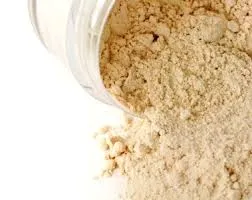Chemicals Used in Drinking Water Treatment
Ensuring that drinking water is safe and clean is a critical aspect of public health
. Water treatment processes utilize a variety of chemicals to eliminate contaminants, pathogens, and impurities, ensuring the water is safe for human consumption. This article explores the main chemicals used in drinking water treatment, their functions, and their significance in providing clean and potable water.One of the primary chemicals used in drinking water treatment is chlorine. Chlorination is a widely accepted method for disinfecting water and controlling microbial pathogens. Chlorine effectively kills bacteria, viruses, and other harmful microorganisms. It is introduced to the water supply in the form of chlorine gas or sodium hypochlorite. Chlorination not only disinfects water at the treatment plant but also provides a residual disinfectant effect as the water travels through distribution systems. However, it is crucial to manage chlorine levels because excessive amounts can lead to the formation of disinfection by-products (DBPs), which may pose health risks.
Another essential chemical is coagulating agents, predominantly aluminum sulfate (alum) and iron salts. Coagulation helps in the removal of suspended solids and turbidity. When added to water, these chemicals cause small particles to clump together and form larger aggregates, or floc. This process significantly enhances the efficiency of subsequent sedimentation and filtration stages in water treatment. By improving the clarity of water, coagulation plays a crucial role in the aesthetic quality of drinking water.
Fluoride is also a controversial yet commonly used chemical in drinking water treatment. Fluoridation is the process of adding fluoride to drinking water to help prevent dental cavities. Numerous studies have supported the effectiveness of fluoridation in reducing tooth decay, particularly in children. However, the practice is met with opposition from some groups who raise concerns about the potential health effects of excessive fluoride exposure, highlighting the need for careful control within recommended limits.
chemicals used in drinking water treatment

Activated carbon is another significant substance used in water treatment, primarily for its ability to adsorb organic compounds, chlorine, and odor-causing substances. Granular activated carbon (GAC) treatment effectively removes contaminants that conventional methods might miss. In addition to improving taste and odor, activated carbon helps in reducing the levels of various harmful chemicals, making it a valuable option for advanced water treatment systems.
Ozone is recognized as a powerful oxidizing agent and is increasingly used in place of chlorine in some water treatment facilities. Ozonation offers multiple benefits, including strong disinfection capabilities and the ability to break down pollutants that chlorine may not effectively eliminate, such as certain pesticides and pharmaceuticals. Additionally, ozone does not produce the same harmful disinfection by-products as chlorine. However, the equipment for ozone generation can be expensive, and it requires careful management to ensure safety due to ozone’s reactive nature.
Moreover, phosphates and acids are added to control corrosion in pipes and water distribution systems. Corrosion control additives create a protective coating on the interior of pipes, preventing harmful metals, such as lead and copper, from leaching into drinking water. This is particularly important in older infrastructure, where such metals may pose health risks. These chemicals help maintain water quality throughout the distribution system, ensuring that consumers receive safe drinking water.
The treatment of drinking water is a dynamic process, often requiring the use of various chemicals tailored to specific water quality conditions and contaminants present. Regulatory bodies, such as the Environmental Protection Agency (EPA) in the United States, set stringent standards for the permissible levels of these chemicals to safeguard public health. Water treatment facilities continuously monitor the chemical dosing, and innovations in technology and methods are consistently evolving to improve water quality and treatment efficiency.
In conclusion, the chemicals used in drinking water treatment play an essential role in ensuring the safety and palatability of our drinking water. From disinfection agents like chlorine to coagulants like alum and advanced treatments like ozone, each chemical addresses specific challenges posed by water contamination. Understanding these chemicals' functions and significance is crucial for both industry professionals and the public to appreciate the complexities of water treatment and the importance of providing clean, safe drinking water for communities. As water quality regulations advance and technologies improve, the methods employed in drinking water treatment will continue evolving, ultimately aiming to provide the highest quality water possible for all consumers.

